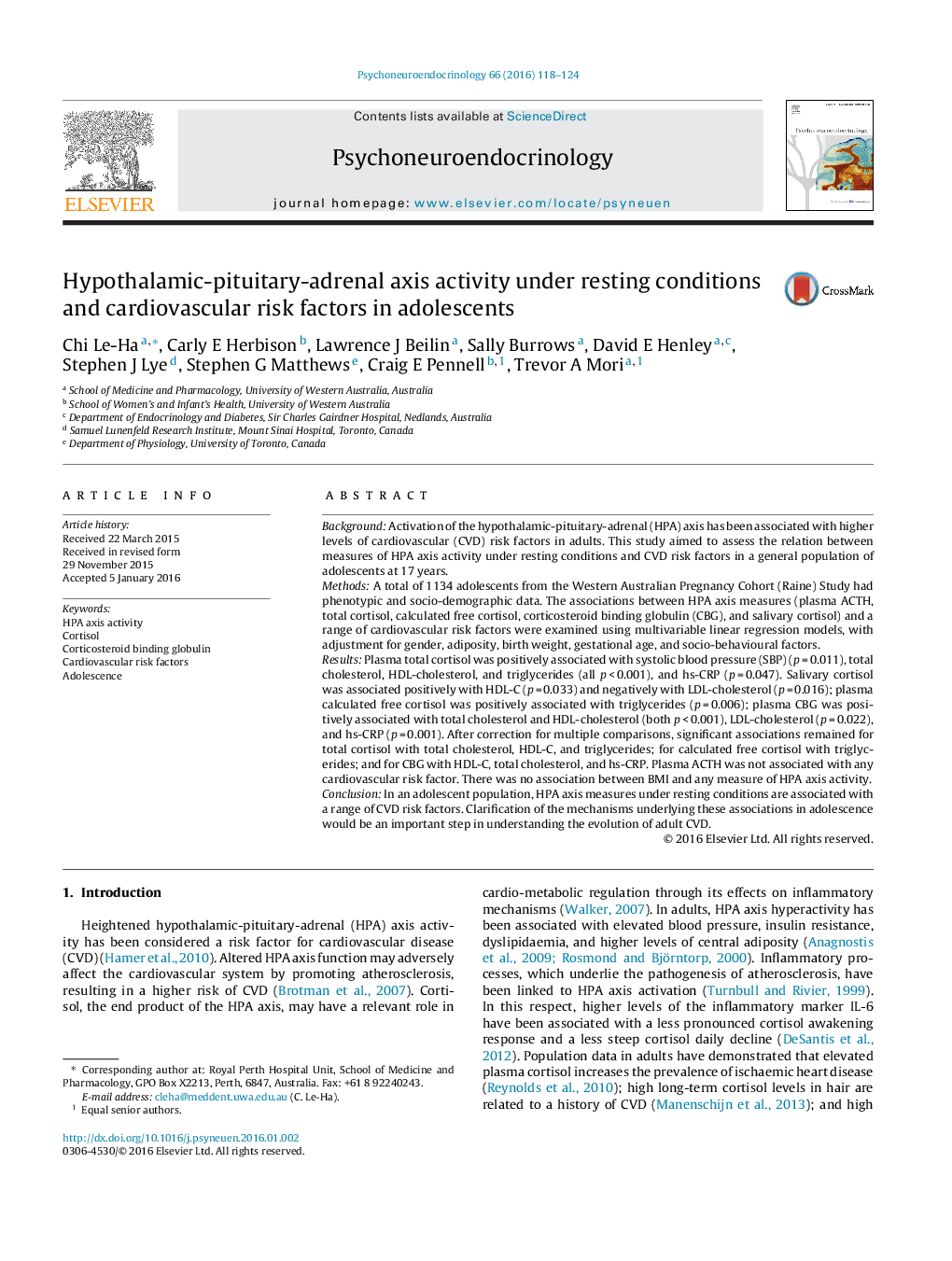| کد مقاله | کد نشریه | سال انتشار | مقاله انگلیسی | نسخه تمام متن |
|---|---|---|---|---|
| 336313 | 547112 | 2016 | 7 صفحه PDF | دانلود رایگان |
• This study aimed to assess the relation between HPA axis activity under resting conditions and cardiovascular risk factors in a general population of adolescents.
• Plasma total cortisol positively associated with systolic blood pressure, total cholesterol, HDL-cholesterol, triglycerides and high-sensitivity C-reactive protein.
• Plasma calculated free cortisol positively associated with triglycerides.
• Plasma CBG positively associated with total cholesterol, HDL-cholesterol, LDL-cholesterol, and hs-CRP.
• Clarification of the mechanisms underlying the relationship between HPA axis activity and cardiovascular risk factors in adolescence would be an important step in understanding the evolution of adult CVD.
BackgroundActivation of the hypothalamic-pituitary-adrenal (HPA) axis has been associated with higher levels of cardiovascular (CVD) risk factors in adults. This study aimed to assess the relation between measures of HPA axis activity under resting conditions and CVD risk factors in a general population of adolescents at 17 years.MethodsA total of 1134 adolescents from the Western Australian Pregnancy Cohort (Raine) Study had phenotypic and socio-demographic data. The associations between HPA axis measures (plasma ACTH, total cortisol, calculated free cortisol, corticosteroid binding globulin (CBG), and salivary cortisol) and a range of cardiovascular risk factors were examined using multivariable linear regression models, with adjustment for gender, adiposity, birth weight, gestational age, and socio-behavioural factors.ResultsPlasma total cortisol was positively associated with systolic blood pressure (SBP) (p = 0.011), total cholesterol, HDL-cholesterol, and triglycerides (all p < 0.001), and hs-CRP (p = 0.047). Salivary cortisol was associated positively with HDL-C (p = 0.033) and negatively with LDL-cholesterol (p = 0.016); plasma calculated free cortisol was positively associated with triglycerides (p = 0.006); plasma CBG was positively associated with total cholesterol and HDL-cholesterol (both p < 0.001), LDL-cholesterol (p = 0.022), and hs-CRP (p = 0.001). After correction for multiple comparisons, significant associations remained for total cortisol with total cholesterol, HDL-C, and triglycerides; for calculated free cortisol with triglycerides; and for CBG with HDL-C, total cholesterol, and hs-CRP. Plasma ACTH was not associated with any cardiovascular risk factor. There was no association between BMI and any measure of HPA axis activity.ConclusionIn an adolescent population, HPA axis measures under resting conditions are associated with a range of CVD risk factors. Clarification of the mechanisms underlying these associations in adolescence would be an important step in understanding the evolution of adult CVD.
Journal: Psychoneuroendocrinology - Volume 66, April 2016, Pages 118–124
